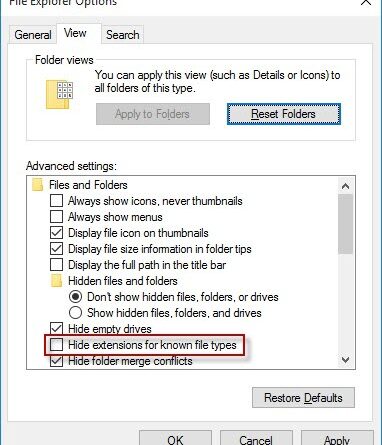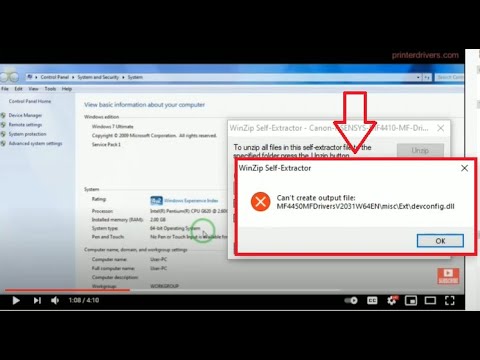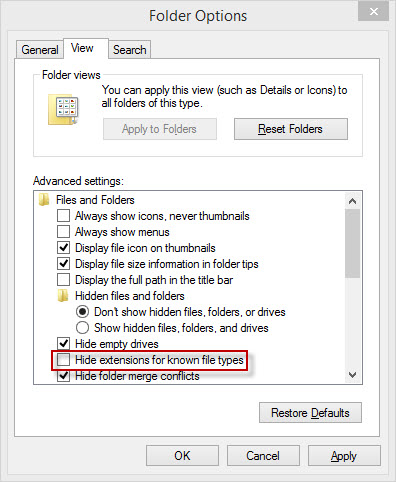
Have you ever encountered the frustrating issue of not being able to create an output file? It can be incredibly annoying, especially when you’re in the middle of an important task or project. But fear not, because in this article, we’ll dive into the reasons why you might be facing this problem and provide you with some troubleshooting solutions. So, let’s get started and resolve this issue once and for all!
There could be several reasons why you’re unable to create an output file. One common issue could be that the destination folder or directory where you’re trying to save the file is full or doesn’t have sufficient write permissions. This means that your computer is unable to write or save new files in that particular location. Another possibility is that the file you’re trying to create already exists with the same name in that location, causing a conflict and preventing the creation of a new output file.
To rectify this problem, you can first check the destination folder or directory for any write restrictions. Make sure that you have the necessary permissions to create and save files in that location. If needed, you can try saving the output file in a different directory. Additionally, double-check if a file with the same name already exists in the destination folder. If it does, consider renaming the file or deleting the existing one before attempting to create the output file again.
In our detailed article, we’ll dive deeper into these troubleshooting solutions and explore additional potential causes for the “unable to create output file” issue. We’ll also provide you with step-by-step instructions and tips to help you overcome this problem. By the end of the article, you’ll have the knowledge and tools to successfully create output files without any hassles. So, stay tuned and let’s address this issue together!
Table of Contents
Troubleshooting: Unable to Create Output File
Overview
In today’s tech-driven world, we heavily rely on computers to simplify our tasks. However, encountering technical issues is inevitable. One common problem that users often face is being unable to create an output file. This article aims to provide you with a step-by-step guide to troubleshoot and resolve this issue.
Explanation of the problem
When you encounter the “Unable to Create Output File” error message, it means that your computer is unable to write data to a designated location. This could be due to various reasons, such as insufficient disk space, incorrect file permissions, or file system errors.
Importance of troubleshooting
Troubleshooting is an essential skill for every computer user. It allows you to identify and resolve issues independently, saving you time and frustration. By effectively troubleshooting the “Unable to Create Output File” problem, you can ensure the smooth functioning of your computer and maintain productivity.
Possible Causes
To start troubleshooting, it is crucial to understand the potential causes behind the “Unable to Create Output File” error. This section discusses three common causes of this problem.
Insufficient disk space
One primary cause of the error is insufficient disk space. If your computer’s storage is reaching its maximum capacity, it can prevent the creation of new files. As a result, you may experience difficulty creating output files.
Incorrect file permissions
File permissions determine who can access, modify, or execute files on your computer. If the file permissions are misconfigured or set to restrict the creation of new files, you may encounter the “Unable to Create Output File” error.
File system errors
File system errors occur when the structure of your computer’s storage becomes corrupted. These errors can prevent the creation of new files and lead to the “Unable to Create Output File” problem.
Troubleshooting Steps
Now that you are aware of the possible causes of the “Unable to Create Output File” issue, let’s move on to the troubleshooting steps. Follow these steps in the order presented to effectively resolve the problem.
Check available disk space
To begin troubleshooting, you need to ensure that your computer has sufficient disk space. You can easily check this by following these steps:
- Open the file explorer or finder on your computer.
- Locate the drive or partition where you are trying to create the output file.
- Right-click on the drive/partition and select “Properties” or “Get Info.”
- Check the available disk space. If it is almost full, you will need to free up space by deleting unnecessary files or moving them to an external storage device.
Verify file permissions
File permissions play a crucial role in determining your ability to create files. Follow these steps to verify and modify file permissions:
- Right-click on the folder or directory where you want to create the output file.
- Select “Properties” or “Get Info.”
- Navigate to the “Security” or “Permissions” tab.
- Ensure that your user account has the necessary permissions to create files. If not, click on “Edit” or “Advanced” to modify the permissions accordingly.
Run disk repair utility
If the previous steps did not resolve the issue, you may need to run a disk repair utility to fix any underlying file system errors. The procedure may differ depending on your operating system:
- For Windows users:
- Open the “Command Prompt” with administrative privileges.
- Type “chkdsk /f” followed by the drive letter of the affected drive (e.g.,
chkdsk /f C:). - Press Enter and wait for the utility to scan and repair the disk.
- For Mac users:
- Open the “Disk Utility” from the “Applications” folder.
- Select the affected drive from the sidebar.
- Click on the “First Aid” tab and then “Run” to initiate the disk repair process.
Additional Considerations
While the above troubleshooting steps cover the most common causes of the “Unable to Create Output File” issue, it is important to keep a few additional considerations in mind.
Software conflicts
Conflicts between different software applications can lead to various issues, including the inability to create output files. If you recently installed new software or made changes to your system, it is worth considering if these changes could be causing the problem.
Hardware issues
In some cases, hardware issues can contribute to the “Unable to Create Output File” error. For example, a faulty hard drive or a disconnected external storage device may hinder file creation. If you suspect a hardware problem, consult a professional technician for assistance.

Advanced Troubleshooting
If the basic troubleshooting steps fail to resolve the issue, you may need to explore more advanced techniques. Here are two suggestions for advanced troubleshooting:
Using command line tools
Command line tools provide additional options for troubleshooting file-related issues. You can use commands such as attrib or chmod to modify file attributes and permissions. Refer to your operating system’s documentation or online resources for specific commands and their usage.
Checking system logs
System logs record events and errors that occur on your computer. By analyzing these logs, you may find clues or error messages related to the “Unable to Create Output File” problem. Check the logs using the built-in tools provided by your operating system or use third-party log viewer applications.
Contacting Support
In some cases, the “Unable to Create Output File” error may persist despite your best troubleshooting efforts. In such situations, it is advisable to seek professional help. Here are some guidelines for contacting support:
When to seek professional help
If you have exhausted all available troubleshooting resources and are unable to resolve the problem, it is time to contact professional support. They have the expertise and tools to diagnose and fix complex issues.
Providing necessary information
When contacting support, provide them with as much relevant information as possible. Mention the troubleshooting steps you have already taken, the error messages you encountered, and any relevant system specifications. This will help them understand the issue better and provide you with appropriate solutions.

Prevention and Best Practices
Preventing the “Unable to Create Output File” issue is always better than fixing it later. Following these prevention and best practices can help you avoid encountering this problem in the future:
Regularly maintain disk space
Regularly check your computer’s available disk space and ensure that it does not reach its maximum capacity. Delete unnecessary files, transfer them to external drives, or consider upgrading your storage to accommodate your needs.
Regularly check and repair file system errors
Perform regular disk maintenance by running disk repair utilities or using built-in tools to check for and fix file system errors. This proactive approach can prevent issues such as the “Unable to Create Output File” error.
Conclusion
Encountering the “Unable to Create Output File” issue can be frustrating, but with the right troubleshooting steps, you can resolve it effectively. In this article, we discussed the possible causes of the problem, provided step-by-step troubleshooting guidance, and highlighted additional considerations, advanced techniques, and preventive measures. By following these guidelines, you can minimize disruption to your workflow and ensure that you can create output files efficiently. Remember, troubleshooting is a skill that can empower you to tackle various technical challenges.



